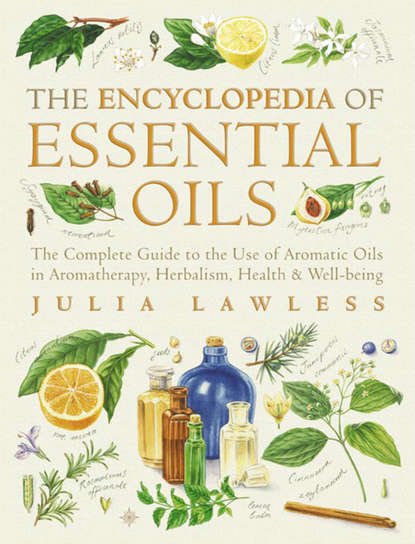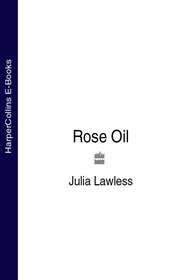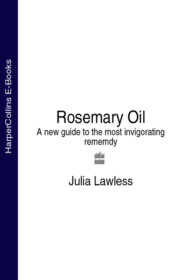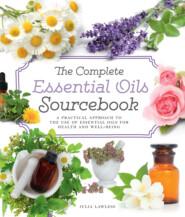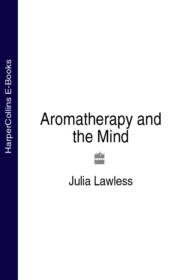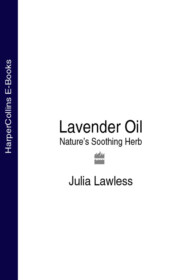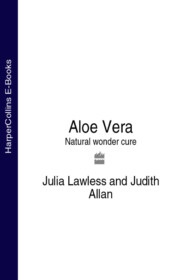По всем вопросам обращайтесь на: info@litportal.ru
(©) 2003-2024.
✖
Encyclopedia of Essential Oils: The complete guide to the use of aromatic oils in aromatherapy, herbalism, health and well-being.
Настройки чтения
Размер шрифта
Высота строк
Поля
HERBAL/FOLK TRADITION The West Indian bay tree is often grown in groves together with the allspice or pimento bush, then the fruits of both are dried and powdered for the preparation of the household allspice. The so-called bay rum tree also provides the basic ingredient for the famous old hair tonic, which is made from the leaves by being distilled in rum. ‘A hair application with both fragrant and tonic virtues … useful for those who suffer from greasy hair and need a spirit-based, scalp-stimulating lotion to help them to control their locks!’
ACTIONS Analgesic, anticonvulsant, antineuralgic, antirheumatic, antiseptic, astringent, expectorant, stimulant, tonic (for hair).
EXTRACTION Essential oil by water or steam distillation from the leaves. An oleoresin is also produced in small quantities.
CHARACTERISTICS A dark yellow mobile liquid with a fresh-spicy top note and a sweet-balsamic undertone. It blends well with lavander, lavandin, rosemary, geranium, ylang ylang, citrus and spice oils.
PRINCIPAL CONSTITUENTS Eugenol (up to 56 per cent), myrcene, chavicol and, in lesser amounts, methyl eugenol, linalol, limonene, among others.
SAFETY DATA Moderately toxic due to high eugenol content; also a mucous membrane irritant – use in moderation only. Unlike bay laurel, however, it does not appear to cause dermal irritation or sensitization.
AROMATHERAPY/HOME USE
Skin Care: Scalp stimulant, hair rinse for dandruff, greasy, lifeless hair, and premoting growth.
Circulation, Muscles And Joints: Muscular and articular aches and pains, neuralgia, poor circulation, rheumatism, sprains, strains.
IMMUNE SYSTEM: Colds, ’flu, infectious diseases.
OTHER USES Extensively used in fragrance work, in soaps, detergents, perfumes, aftershaves and hair lotions, including bay rum. Employed as a flavour ingredient in many major food categories, especially condiments, as well as alcoholic and soft drinks.
BENZOIN (#ulink_a096dec8-8680-500e-8118-068fc8229405)
Styrax benzoin
FAMILY Styracaceae
SYNONYMS Gum benzoin, gum benjamin, styrax benzoin.
GENERAL DESCRIPTION A large tropical tree up to 20 metres high with pale green citrus-like leaves, whitish underneath, bearing hard-shelled flattish fruit about the size of a nutmeg. The benzoin is a pathological product, formed when the trunk is cut; the tree exudes a balsamic resin which hardens upon exposure, to air and sunlight.
DISTRIBUTION Native to tropical Asia; the two main regions of production are Sumatra, Java and Malaysia for ‘Sumatra’ benzoin, and Laos, Vietnam, Cambodia, China and Thailand for ‘Siam’ benzoin.
OTHER SPECIES There are many different varieties within the Styrax family which produce benzoin, but these are generally classified under either Sumatra benzoin (S. paralleloneurus) or Siam benzoin (S. tonkinensis) – see also Botanical Classification (#litres_trial_promo) section.
HERBAL/FOLK TRADITION It has been used for thousands of years in the east as a medicine and incense; the fumigations were believed to drive away evil spirits. It was used by the Chinese herbalists for its heating and drying qualities, as a good urinary antiseptic and as an aid to digestion.
In the west, it is best known in the form of compound tincture of benzoin or Friars Balsam, used for respiratory complaints. Externally it is used for cuts and irritable skin conditions; internally it is used as a carminative for indigestion, etc. It also acts as a preservative of fats.
ACTIONS Anti-inflammatory, anti-oxidant, antiseptic, astringent, carminative, cordial, deodorant, diuretic, expectorant, sedative, styptic, vulnerary.
EXTRACTION The crude benzoin is collected from the trees directly. Benzoin resinoid, or ‘resin absolute’, is prepared from the crude using solvents, for example benzene and alcohol, which are then removed. Commercial benzoin is usually sold dissolved in ethyl glycol or a similar solvent. A ‘true’ absolute is also produced in small quantities.
CHARACTERISTICS 1. Sumatra crude benzoin occurs as greyish-brown brittle lumps with reddish streaks, with a styrax-like odour. There are several different qualities available; the so-called ‘almond’ grade is considered superior. 2. Siam benzoin comes in pebble or tear-shaped orange-brown pieces, with a sweet-balsamic vanilla-like scent, this type having a more refined odour than the Sumatra type.
Benzoin resinoid is produced from both the Siam and Sumatra types, or a mix of the two. It is an orange-brown viscous mass with an intensely rich sweet-balsamic odour. It blends well with sandalwood, rose, jasmine, copaiba balsam, frankincense, myrrh, cypress, juniper, lemon, coriander and other spice oils.
PRINCIPAL CONSTITUENTS 1. Sumatra Benzoin: mainly coniferyl cinnamate and sumaresinolic acid, with benzoic acid, cinnamic acid, and traces of styrene, vanillin and benzaldehyde. 2. Siam benzoin: mainly coniferyl benzoate (65–75 per cent), with benzoic acid, vanillin, siaresinolic acid and cinnamyl benzoate.
SAFETY DATA Non-toxic, non-irritant, possible sensitization. Compound benzoin tincture is ‘regarded as moderately toxic, due probably to occasional contact dermatitis developed in some individuals … which contains, in addition to benzoin, aloe, storax, Tolu balsam and others.’
AROMATHERAPY/HOME USE
Skin Care: Cuts, chapped skin, inflamed and irritated conditions.
Circulation, Muscles And Joints: Arthritis, gout, poor circulation, rheumatism.
Respiratory System: Asthma, bronchitis, chills, colic, coughs, laryngitis.
Immune System: ’Flu.
Nervous System: Nervous tension and stress-related complaints. It warms and tones the heart and circulation, both physically and metaphorically: ‘This essence creates a kind of euphoria; it interposes a padded zone between us and events.’
OTHER USES Compound benzoin tincture is used in pharmaceuticals and in dentistry to treat gum inflammation. The resinoid and absolute are used extensively as fixatives and fragrance components in soaps, cosmetics, toiletries and perfumes, especially Siam benzoin. Both types are used in most food categories, including alcoholic and soft drinks.
BERGAMOT (#ulink_5964cec0-da81-5744-9470-8eaedcd5b0eb)
Citrus bergamia
FAMILY Rutaceae
SYNONYMCitrus aurantium subsp. bergamia.
GENERAL DESCRIPTION A small tree, about 4.5 metres high with smooth oval leaves, bearing small round fruit which ripen from green to yellow, much like a miniature orange in appearance.
DISTRIBUTION Native to tropical Asia. Extensively cultivated in Calabria in southern Italy and also grown commercially on the Ivory Coast.
OTHER SPECIES Not to be confused with the herb bergamot or bee balm (Monarda didyma).
HERBAL/FOLK TRADITION Named after the Italian city of Bergamo in Lombardy, where the oil was first sold. The oil has been used in Italian folk medicine for many years, primarily for fever (including malaria) and worms; it does not feature in the folk tradition of any other countries. However, due to recent research in Italy, bergamot oil is now known to have a wide spectrum of applications, being particularly useful for mouth, skin, respiratory and urinary tract infections.
ACTIONS Analgesic, anthelmintic, antidepressant, antiseptic (pulmonary, genito-urinary), antispasmodic, antitoxic, carminative, digestive, diuretic, deodorant, febrifuge, laxative, parasiticide, rubefacient, stimulant, stomachic, tonic, vermifuge, vulnerary.
EXTRACTION Essential oil by cold expression of the peel of the nearly ripe fruit. (A rectified or terpeneless oil is produced by vacuum distillation or solvent extraction.)
CHARACTERISTICS A light greenish-yellow liquid with a fresh sweet-fruity, slightly spicy-balsamic undertone. On ageing it turns a brownish-olive colour. It blends well with lavender, neroli, jasmine, cypress, geranium, lemon, chamomile, juniper, coriander and violet.
PRINCIPAL CONSTTTUENTS Known to have about 300 compounds present in the expressed oil: mainly linalyl acetate (30–60 per cent), linalol (11–22 per cent) and other alcohols, sesquiterpenes, terpenes, alkanes and furocoumarins (including bergapten, 0.30–0.39 per cent).
SAFETY DATA Certain furocoumarins, notably bergapten, have been found to be phototoxic on human skin; that is, they cause sensitization and skin pigmentation when exposed to direct sunlight (in concentration and in dilution even after some time!). Extreme care must be taken when using the oil in dermal applications – otherwise a rectified or ‘bergapten-free’ oil should be substituted. Available information indicates it to be otherwise non-toxic and relatively non-irritant.
AROMATHERAPY/HOME USE
Skin Care: Acne, boils, cold sores, eczema, insect repellent and insect bites, oily complexion, psoriasis, scabies, spots, varicose ulcers, wounds.
Respiratory System: Halitosis, mouth infections, sore throat, tonsillitis.
Digestive System: Flatulence, loss of appetite.





